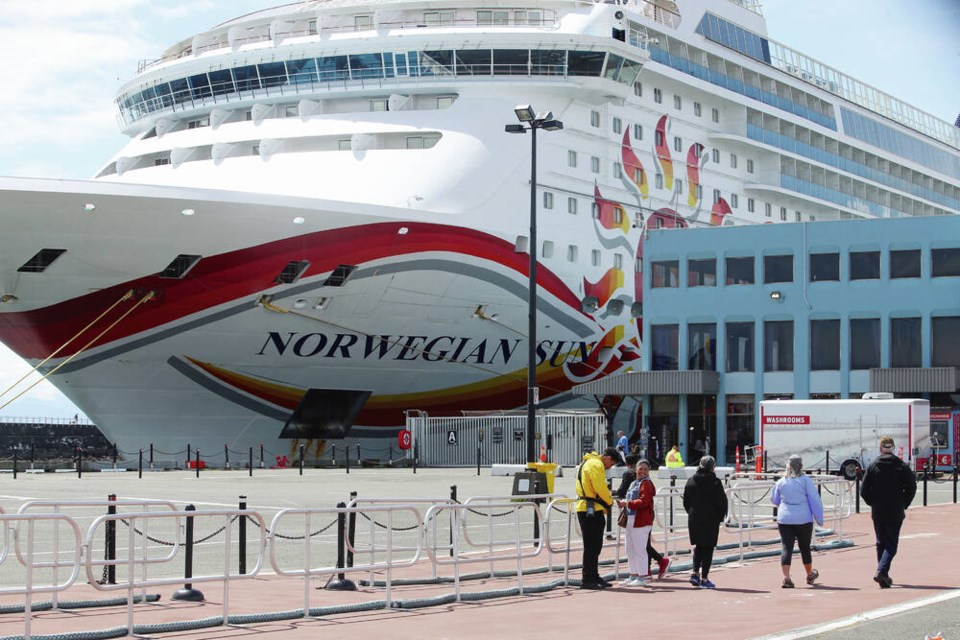Cruise ships will pay more than three times the current rate to dump high-risk ship waste starting in 2024.
On Wednesday, the Capital Regional District’s environmental services committee voted to increase dumping fees to $500 per tonne from the existing rate of $157 per tonne. Victoria Mayor Lisa Helps had pushed for the new rates to kick in next year, but the move was rejected.
Helps argued one year’s notice was more than enough time for the cruise industry to make adjustments to handle the increased cost. CRD staff have estimated the increase will amount to only $200,000 a year.
“I think that waiting till 2024 is far too long,” she said. “Industry adjusts, and this is an adjustment that they’re going to need to make if they want to continue to keep bringing waste here.
“We have to look at ways to deter solid waste from coming into our landfill.”
However, the committee favoured the recommendation put forward by the Greater Victoria Harbour Authority to have the new fee structure apply to the 2024 season, as the industry’s pricing for next year has already been set.
In an address to the committee, Marg Gardiner, president of the James Bay Neighbourhood Association, said no one should have to accept cruise-ship garbage, and it should stop completely as of the 2023 cruise ship season. She said the number of trucks used to ferry waste from Ogden Point cruise terminal to Hartland Landfill is a serious environmental concern, while the ships themselves have other options.
Last year, when cruise ships were unable to dock in Victoria due to the pandemic, they offloaded their waste elsewhere, she said.
Gardiner said Victoria residents want quality of life, clean air and healthy communities, not “foreign garbage.” “Why do we import solid and liquid waste from ships originating in Seattle, given their past concerns are about our wastewater infrastructure?”
High-risk cruise-ship waste amounts to less than one per cent of all waste at Hartland.
According to a CRD report, Canada Border Services Agency staff in conjunction with the Canada Food Inspection Agency have the discretion of designating cruise-ship waste as either high risk or low risk.
What constitutes high-risk cruise ship waste appears to be a grey area, though it can include food waste.
According to the CRD, any waste that has not been inspected by the Canada Border Services Agency is automatically deemed high-risk.
High-risk waste received at Hartland is subject to deep burial in waste trenches and covered with a minimum of one metre of low-permeability clay, while low-risk waste is managed like other household garbage.
A CRD staff report suggests the cruise industry recycles about 85 per cent of its waste.
The increased fee to dump at Hartland Landfill may prompt the industry to find new and better ways to recycle and divert waste or find new ways of disposal, it says.
In 2019, the last full cruise season, Hartland Landfill received about 2,100 tonnes of cruise-ship waste, 600 tonnes of which was deemed high-risk.
CRD staff report that dumping fees in Seattle and Vancouver are likely lower. In Vancouver, cruise-ship waste is taken to the Waste-to-Energy Facility in Burnaby.
That facility handles about 250,000 tonnes of garbage each year, burning it to create electricity.



